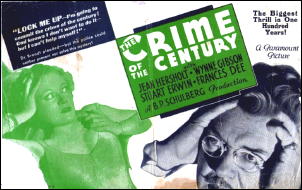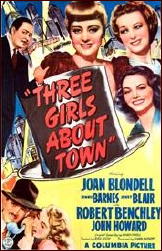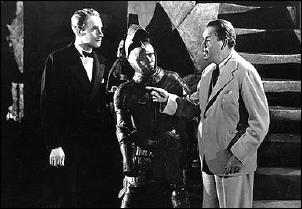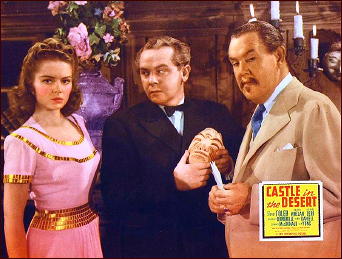Thu 19 Nov 2009
Reviewed by David L. Vineyard: S. S. VAN DINE – The Bishop Murder Case (Book and Movie).
Posted by Steve under Mystery movies , Reviews[5] Comments
S. S. VAN DINE – The Bishop Murder Case. Charles Scribner’s Sons, US, hardcover, 1929. Cassell, UK, hc, 1929. Reprinted many times in both hardcover and soft, including: Pocket #305, July 1945; Gold Medal T2140, no date given [1970s].

Film: The Bishop Murder Case. MGM, 1930. Basil Rathbone, Lilia Hyams, Roland Young, Delmer Daves. Directors: David Burton & Nick Grinde.
Of all the criminal cases in which Philo Vance participated as an unofficial investigator, the most sinister, the most bizarre, the most seemingly incomprehensible, and certainly the most terrifying, was the one that followed the famous Greene murders.
The Bishop Murder Case is not the best of the Philo Vance mysteries, but it is the showpiece of the series, a full out extravaganza that mirrors many of the strengths and weaknesses of the Classic Detective novel of its time — and particularly of the Van Dine brand that became the American model of the Golden Age Detective Story, at a time when Van Dine’s (art critic Wilfrid Huntington Wright) Twenty Rules became as faithfully entrenched on this side of the Atlantic as those of the British Detection Club were on the other.
The Bishop Murder Case finds the supercilious Philo Vance up against his most dangerous adversary, a Mother Goose Nursery Rhyme killer who calls himself the Bishop, and whose crimes have rhyme, but seemingly no reason.
‘I, said the sparrow,
‘With my bow and arrow.
I killed Cock Robin.'”

With District Attorney Markham, Sgt. Heath, and Dr. Doremus, the dour Medical Examiner, in tow and loyal secretary Van Dine recording it all, Vance plunges right into the murder of Joseph Cochraine Robin, by arrow at the Riverside Archery Club, who died shortly after meeting with Raymond Sperling, Sperling being German for sparrow.
The clues lead them to the home of Professor Dillard which runs alongside the Archery Club, and an intellectual who’s who of suspects including a physicist, an astronomer, a mathematician, and a chess master.
And we’re off with a second murder out of Mother Goose as John Sprigg is murdered.
And he had a little gun,
And his bullets were made of lead lead lead;
He shot Johnny Sprigg,
Through the middle of his wig,
And knocked it right off of his head head head.'”

Clues include a knowledge of Ibsen’s plays, and the Reiman-Christofell Tensor for determining the Gausian curvature of spherical and homolodial space… And it wouldn’t hurt if you were familiar with world class chess, abnormal psychology, the Einstein-Bohr theory of radiation, and the implications of modern mathematical theory that would boggle the mind of Newton and Leibnitz…
But knowing who the killer is and proving it are two different things, and after the rescue of the young victim of the next planned killing, Little Miss Muffet, Vance turns to the most high-handed action since the great days of Sherlock Holmes to unveil the killer and serve justice, resulting in perhaps the most famous passage in the Vance canon:
“I took it in my arms — it was helpless… but don’t be so righteous. Do you bring a rattlesnake to the bar of justice? Do you give a mad dog its day in court ? I felt no more compunction in aiding a monster like ______ into the Beyond than I would in crushing out a poisonous reptile in the act of striking.”
“But it was murder!” exclaimed Markham in horrified indignation.
“Oh, doubtless,” said Vance cheerfully. “Yes — of course — most reprehensible … I say, am I by any chance under arrest?”

If there is a more perfect example of the Nietzschean superman as detective other than M.P. Shiel’s Prince Zaleski I can’t think of one.
The film with Basil Rathbone as Vance is a major disappointment. Rathbone is flat and reserved as Vance (and it’s hard to take him seriously in that bowler hat), and despite some decent attempts at atmosphere, the whole Mother Goose nursery rhyme motif is used to little effect. It certainly can’t hold a candle to the William Powell Vance films from the same period. Incidentally the Delmer Daves listed in the credits is the future director of films such as 3:10 to Yuma and Jubal.
The Bishop Murder Case hasn’t so much as a moment of reality in it. It is the classic detective novel in its most artificial form, but it is also, for all of its posing and intellectual pretense, a splendid example of the form and Van Dine and Vance at close to their best.

The Greene Murder Case is likely the best puzzle and formal detective novel of the Vance canon, but Bishop is more fun. Reading it you may understand why Philo Vance once dominated the field and influenced such major writers as Ellery Queen, Rex Stout, and Anthony Abbot.
Ogden Nash
Nash may well have been right, but I think for this one, both he and Van Dine also deserve to take a well deserved bow — without risking that inviting boot to the rear end. The Bishop Murder Case is the game played full out and to splendid effect.















